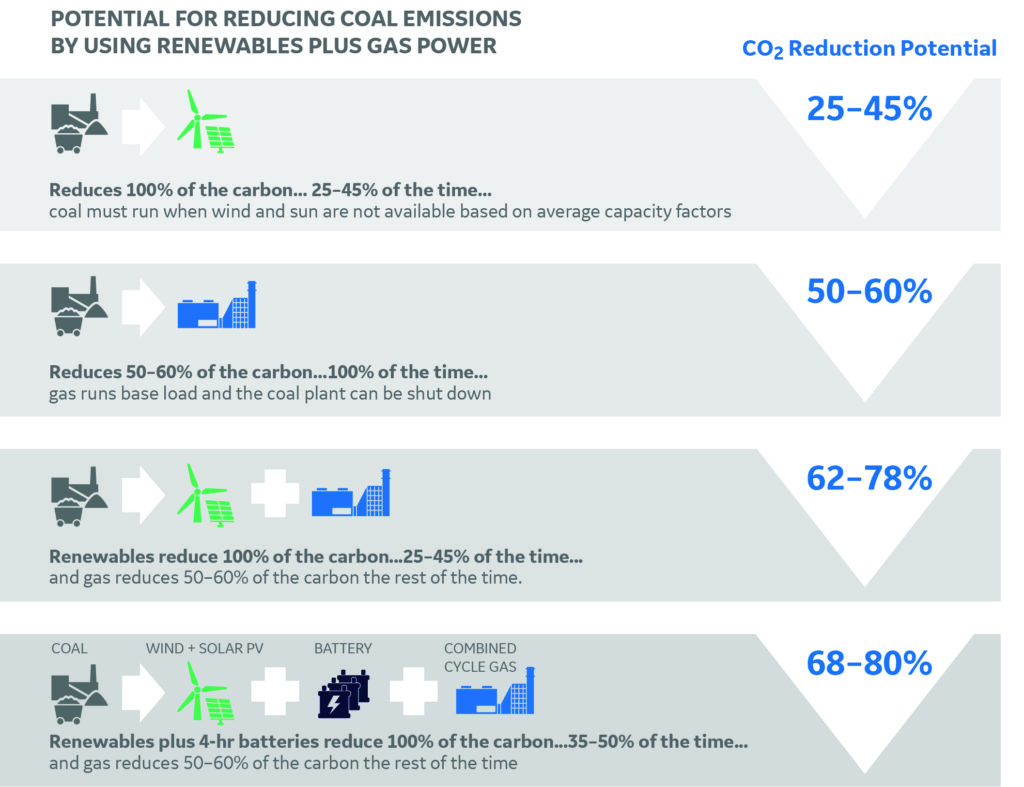The passing of 2020 is a great relief to many. The new year allows us to review not just the tremendous loss of life from the pandemic, but to consider the state of the global energy system.
Despite the virus, 2020 was a great year for climate commitments. While COP26, the UN Climate Change Conference, was postponed to 2021, many large economies announced net-zero emissions goals for mid-century. 2021 will be the year that these ambitions need to be translated into action.
2020 was also the year of stimulus packages. Unfortunately, the “green” components in these packages are severely lacking. IRENA calculated a need for about USD 2 trillion of annual investment for clean energy transition just over the next three years.
The finance community took notice. Green investments were among the highest performers this year, including solar, wind, hydrogen stocks, with Tesla as especially notable. At the same time, many fossil fuel stocks have tanked. These trends suggest that investors and financiers see a new trend.
2020 was a record year for renewable energy. Wind power grew by 71 GW, up from 60 GW in 2019. Solar PV additions are up by 5%. The pandemic impact has been much smaller than anticipated, which caught some by surprise. For example, the IEA projected an 18% market decline mid-year, only to revise its projection upward in November. It shows the resilience and newfound confidence of this emerging industry. Still, these developments were unevenly distributed. For example, the Indian market was hard hit by the virus and contracted as a result.
In terms of renewable power generation, 2020 was another record year. Worldwide around 28% of power was generated from renewables. This can be explained by the fact that generation growth depends on capacity additions in the previous year. At the same time other types of non-renewable generation were curtailed as electricity demand was reduced because of the crisis. The result was that the percentage of renewables in global generation grew even faster than the generation in absolute terms: in Europe, electricity demand declined by 5% compared to previous year, coal generation declined by nearly 20% and renewable power generation reached a 40% share. In the United States the share was nearly 20% and in China 28%. The power generation transition is accelerating and on track for delivering in line with full transition by 2050.
2020 was not a great year for energy efficiency. Energy intensity gains have halved compared to previous year. As the service industry suffered from the pandemic, and some governments promoted infrastructure investments in response, low fossil fuel prices reduced the incentive to invest in efficiency.
This transition is being driven by new record milestones in cost reduction. Abu Dhabi saw a U.S. 1.35 cents/kWh bid for solar PV in June, followed by an even lower bid in a Portugese auction in July. And in U.S. desert conditions, PV with battery storage is now cheaper than gas peaker plants.
But at the same time, the prices of fossil fuels have collapsed, with forward crude oil prices in the U.S. even going negative for a brief time in summer. Oil and gas prices have somewhat recovered since, but natural gas especially regularly sees negative pricing in markets in West Texas. The energy transition efforts may further exacerbate these downward price pressure.
Electrification is rapidly gaining speed in the transport sector. Passenger EV sales increased from 2.1 million in 2019 to 3.1 million in 2020. Still, the share of electric vehicles in heavy duty vehicle sales (above 3.5 tons weight) is much smaller. But 2020 was the year electric trucks became mainstream as various manufacturers offered new electric models. The success of electric vehicles depends to a large extent on the battery pack cost reduction from 157 USD/kWh to 137 USD/kWh. There remains a long way to go for the transformation of the transportation sector.
Meanwhile renewable gas is picking up steam. In Europe, 729 biomethane installation are in operation, producing 2 BCM of methane. In the United States and Canada, 130 installations are in operation and another 110 are under construction. China has a target of 2 BCM by 2020. Yet a lot more growth is needed to make a dent: annual global natural gas production amounts to 5000 BCM. Some countries are well ahead: biogas fed into the gas system is expected to account for more than 20 % of Danish gas consumption from the grid by the end of 2020. On a single day in July, the biomethane share exceeded 40 %.
2020 was another year of hydrogen announcements. A company alliance announced a target of 25 GW by 2026. Various governments have announced tens of GW of electrolyzers by 2030. Yet the starting point is modest with less than 1% blue and less than 1% green hydrogen in the product mix in 2020. Notable 2020 announcements in the demand side include a 1.2 Mt/yr green ammonia project in Saudi Arabia and an LKAB USD 55 bln hydrogen direct reduced iron investment plan in Sweden.
CCS had a mixed year, but attention on the area has never been higher. One of just two operational coal CCS plants worldwide was mothballed in 2020 as low oil prices rendered the process uneconomic. Operational capture barely increased but plants under development nearly doubled.
2021 holds tremendous promise. There are encouraging signs, but a significant acceleration of the clean energy transition is needed. It is likely that electromobility will be a key market going forward, and that the focus of policymakers will further turn towards hard-to-decarbonize sectors. Much more attention is needed for efficiency. Fully embedding clean infrastructure spending into both stabilization and stimulus packages globally, coupled with increased support for developing economies will all be required. The IRENA Assembly, held Jan. 18-21, kicked off a full agenda for the year.
—Morgan Bazilian is director of the Payne Institute, and professor of Public Policy at the Colorado School of Mines. Dolf Gielen is part of the Payne Institute, and director, Technology and Innovation, for the International Renewable Energy Agency.









